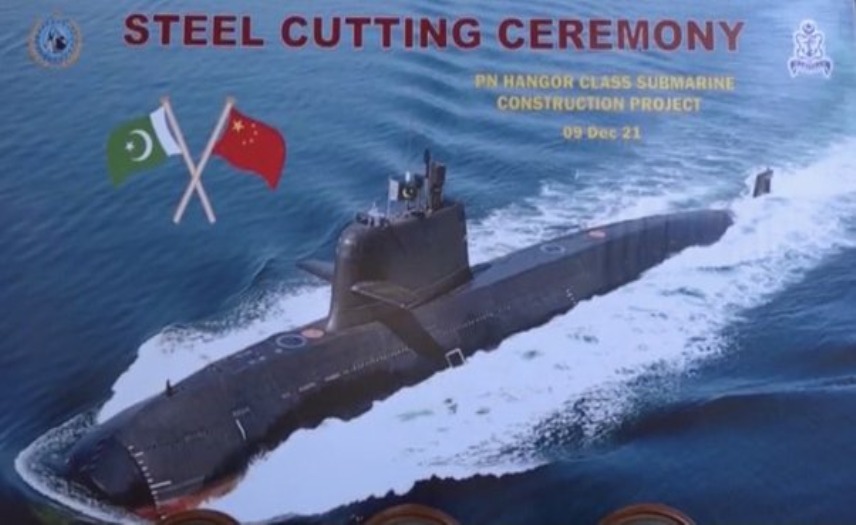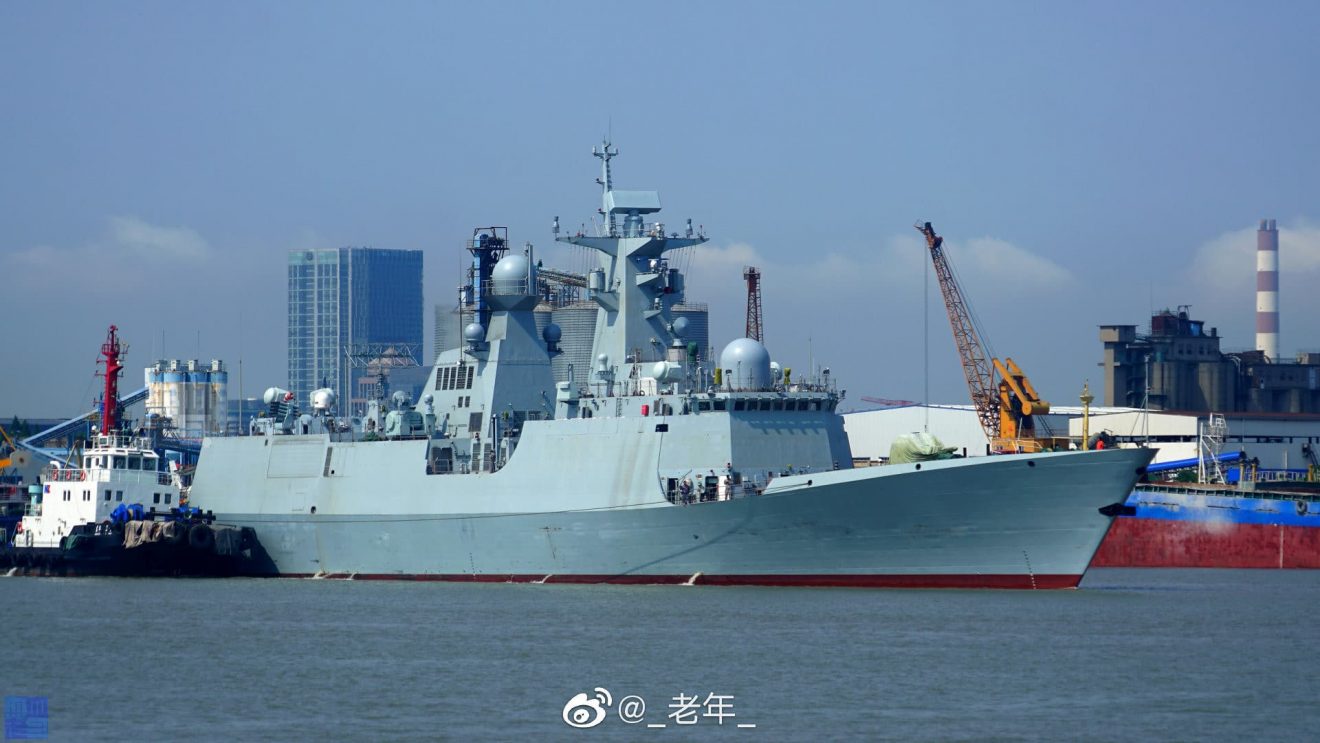As the only Indian Navy-operated port in the country is coming to life and set to become the largest naval base east of the Suez Canal, Pakistan has also accelerated its efforts to have one of Asia’s largest naval fleets by enlarging its surface fleet to 50 warships along with a subsurface fleet of 11 submarines.
Of the 50 surface ships the Pakistan Navy aspires to operate, 20 are expected to be “major surface vessels” like frigates and corvettes.
The move aims to bring some parity with the Indian Navy, whose area of dominance is straddled between the Gulf of Aden in the West and the Malacca Strait in the East. While the Pakistan Navy’s operation area is not as vast as its arch-nemesis, it is an important regional navy in the Indian subcontinent.
Pakistan views India’s naval build-up as a direct threat, as it gives India significant war-fighting capabilities at sea, which could be a disadvantage for Pakistan during a potential conflict.
An article on the defense website Quwa underscores that Pakistan’s defense industry still cannot offer turnkey support for most shipbuilding and naval subsystems. The gaps were identified in the key industrial sectors in Pakistan, such as diesel engines, gas turbines, semiconductors, composites manufacturing, or advanced-grade steel.
The article talks about the Original Equipment Manufacturers taking cognizance of furthering the manufacturing of original systems in Pakistan. “To succeed, OEMs should consider forming partnerships with local vendors responsible for subsystems, such as the state-owned entities, such as Stingray Technologies, for example,” the article added.
In the last couple of years, India has embarked on a Make-In-India drive, encouraging the formation of joint ventures between foreign vendors and their Indian counterparts to boost manufacturing capabilities. Recently, German ThyssenKrupp has partnered with Indian shipbuilder Mazagaon Dockyard Limited (MDL), and Spanish Navantia has joined hands with Larsen and Toubro to bid to make AIP-equipped submarines for India.
However, the road for Pakistani firms is not that easy as most of these entities, especially those belonging to the Strategic Plans Division, are blacklisted by the United States. Collaboration with them can put foreign firms in the line of US sanctions.
Nonetheless, Karachi Shipyards and Engineering Works (KSEW) has been forging ahead with its capability augmentation to build bigger and better warships in the future. What is interesting is that, closer to it, India is building a naval base akin to the US Navy’s sprawling Norfolk naval base in Virginia.
Project Seabird, christened INS (Indian Naval Ship) Kadamba, is the first operational base with a port controlled exclusively by the Navy. This allows the Navy to position and maneuver its operational fleet without worrying about the movement of merchant vessels.
The Navy’s other two operational ports are in Mumbai and Visakhapatnam, located in enclaves within commercial ports. Located on both coasts of India, the movement of warships amidst merchant vessels can be tricky in times of war.
As the Indian Navy cements its position as the first responder in the Indian Ocean Region, INS Kadamba offers it the advantage of being closer to one of the world’s busiest sea lanes and is still out of the strike range of Pakistan’s fighter jets. It is a natural deep-water harbor that can accommodate an aircraft carrier, destroyers, stealth frigates, and submarines. The main functions of the base include the maintenance, overhaul, and repair of the surface and submarine fleet.
Pakistan’s Naval Aspirations
Pakistan laid down its vision for a bigger navy in 2015. In 2015, the first contract was awarded to acquire eight S26 air-independent propulsion (AIP)-equipped Hangor-class submarines (SSP) from China. Under the project, Pakistan would manufacture four boats at KSEW, and the rest would be manufactured at China Shipbuilding Industry Corporation.
The first four boats were to be delivered by 2023, with the last four from KSEW due by 2028. However, financial difficulties and hurdles in getting German approval to export the engine delayed the project. Finally, the first of the eight Hangor II submarines for Pakistan was launched at the Wuchang Shipbuilding yard in Wuhan in April 2024.

The KSEW is undergoing a major capability boost in shipbuilding. One of Pakistan’s main shipyards, the KSEW, has begun using a Syncrolift shift lift-and-transfer system. Ordered in 2017, the ship lift allows KSEW to manufacture 13 ships on land and move hulls to dockyards for launching and sea trials.
KSEW has also expanded with a new construction hall and fabrication facility, which will cover all aspects of building larger naval warships and overhaul and integrate new subsystems into older ships.
The KSEW’s capability building means it can support vessels of up to 8,000 tons, indicating that it may be eyeing heavier shipbuilding like that of frigates, destroyers, or auxiliary vessels in the future.
The KSEW has already built four Babur-class corvettes for the Pakistan Navy. The first two ships, PNS Badar and PNS Tariq were launched in 2022 and 2023. As per the contract, the two of the corvettes were to be built locally.

The second ship of the class, PNS Badar, was launched by KSEW in May 2022, while the fourth ship is under construction at the Karachi shipyard. The first and third ships of the class are built in Turkey. All four ships will become operational with the Pakistan Navy by 2025.
Satellite images confirmed the sighting of a new small submarine at KSEW. Officially, the Pakistan Navy has given no information about its specifications. However, the midget submarines are expected to conduct shallow water operations and naval Special Forces deployments.
The KSEW will construct Jinnah-class frigates, and the Pakistan Navy has already signed a contract with ASFAT (military factory and shipyard management) to design a new frigate according to its specifications. Under the contract, four ships of the Jinnah class will be built.
The Pakistan Navy has also expressed interest in the Turkish STM-500 Shallow-Water Attack Submarine. These submarines are used for Special Forces deployment and mine warfare capabilities. The STM-500 was exhibited at the IDEAS 2022 exhibition. Once the deal is signed, the KSEW is expected to build these submarines.
- Ritu Sharma has been a journalist for over a decade, writing on defense, foreign affairs, and nuclear technology.
- The author can be reached at ritu.sharma (at) mail.com
- Follow EurAsian Times on Google News




